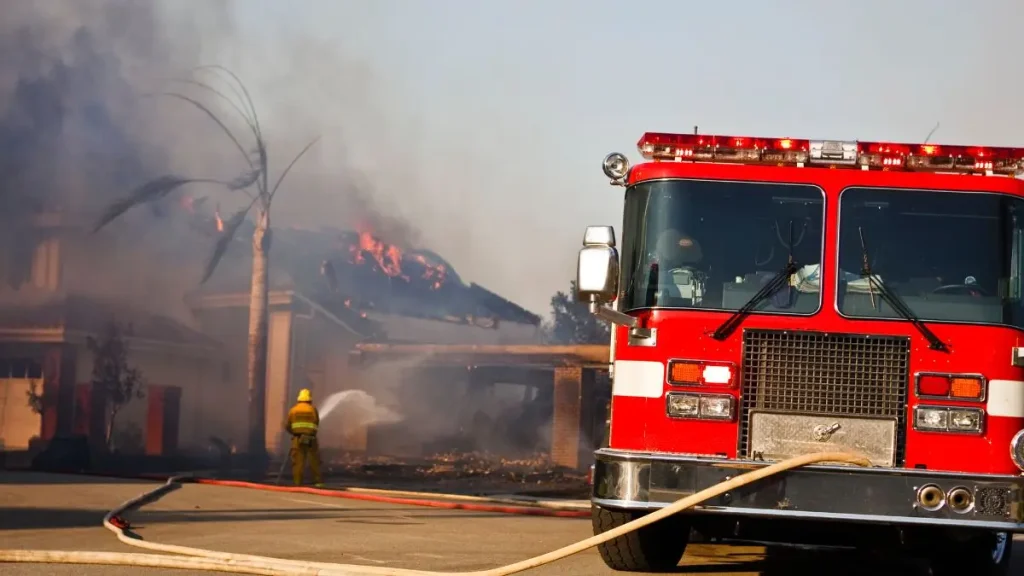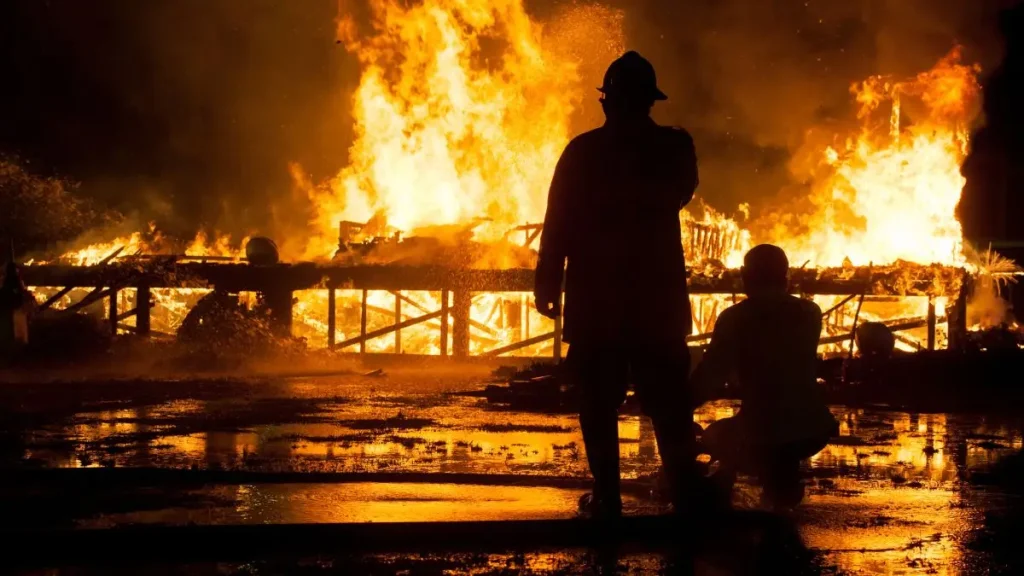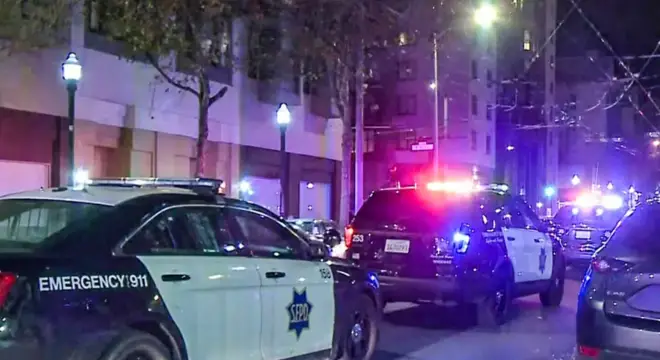Mukwonago House Fire Extinguished Using Portable Water Tactics
I’ve covered plenty of house fires over the years, but this one out of Mukwonago? It stands out.
It wasn’t just the scale of the flames or the late-night call—it was the sheer challenge firefighters faced. The home sat at the end of a half-mile-long gravel driveway, tucked off County Highway I. At nearly 1 a.m., with no hydrants nearby and only a narrow path leading to the house, this wasn’t your typical fire response.
Crews from the Mukwonago Fire Department and surrounding areas had to get creative, fast. You could see the smoke from Highway 83, and by the time firefighters arrived, the blaze had already started eating into the garage. The clock was ticking.
If you’ve ever lived in a more rural part of town—or even just driven through one—you know how tough it can be to get help out there quickly. This fire showed just how real that risk is, and how important fast decisions are when water access isn’t guaranteed.
Have you ever thought about how fire crews would reach your home in an emergency? Let me know in the comments—especially if you’ve had to deal with tricky access or remote setups.
The Call at Midnight: What Sparked Emergency Response
I’ll be honest—I’ve seen a lot of late-night fire calls, but what happened just after 12:50 a.m. in Mukwonago was a firefighter’s worst-case setup.
According to Fox6Now, crews were dispatched to a home off County Highway I, and the moment they rolled up, they knew this wasn’t going to be easy. The fire wasn’t just burning—it was fully visible from Highway 83, lighting up the sky in the middle of the night.
You ever think about how far emergency responders have to come to reach some homes? This one sat at the end of a single-lane, half-mile gravel driveway. That detail might not sound big—until you realize firetrucks rely on space, speed, and water. This home had none of that.
The smoke, the isolation, the limited road access—it all added up. And yet, despite the odds, they still answered the call.
This isn’t the first time we’ve seen a late-night emergency turn critical—a home in New York State was completely destroyed in similar conditions just weeks ago.
“We Had No Access”: Why This Fire Was So Hard to Fight

Here’s something you probably don’t think about unless you’ve worked with fire crews: it’s not just about showing up fast—it’s about how you fight when the usual tools don’t work.
In this case, there were no hydrants, and the long gravel drive meant they couldn’t lay supply lines from the road to the house. Picture that. You’re up against a growing fire, it’s pitch dark, and the main tool you rely on—water—isn’t easily accessible.
Firefighters described it as “a huge challenge.” I don’t doubt it. It took multiple departments, creative planning, and real grit to figure out their next move.
And here’s what I want you to think about: Could your property be this hard to reach in an emergency? If the answer’s even a “maybe,” you’ve got some decisions to make.
In a recent Cedar Park house fire, quick access and hydrant availability made a huge difference—showing how much location can impact outcome.
The Pool That Saved the House
This is where it gets wild—in the best way.
Since they couldn’t lay lines, crews did something I haven’t seen often: they used the home’s own backyard pool as a water source. One by one, fire engines shuttled water from the pool, turning it into a makeshift reservoir.
That move probably saved the house.
The fire had taken hold over the garage roof, and without that creative solution, it could’ve spread fast. But using the pool gave them just enough supply and pressure to get the flames under control—nearly four hours later.
If your home has a pool, have you ever considered it could serve a purpose like this in an emergency? It’s not common, but clearly, it can be life-saving when hydrants aren’t around.
I recently came across a WhatsApp channel that shares quick fire updates, home safety tips, and rural emergency alerts—it’s a helpful resource if you’re living in a more isolated area.
Damage, Injuries, and What Crews Accomplished
Let me tell you something: this could’ve ended a lot worse.
Thanks to their quick thinking, firefighters contained the damage to just the area above the garage. That’s remarkable considering the water limitations and the remote location. The rest of the house? It was spared.
But it came at a cost.
One firefighter was taken to the hospital with heat-related symptoms. Thankfully, no civilian injuries were reported. Still, it’s a sobering reminder—these men and women push themselves to the edge to protect homes like yours and mine.
You never want to need them. But when you do, this is the kind of response you hope for.
Have you or someone you know ever faced a similar fire emergency in a remote area? I’d love to hear your thoughts—drop a comment and let’s talk about it.
Lessons for Homeowners: Could This Happen to You?

Let’s be real—most of us don’t think about fire truck access when we buy or build a house. But after seeing what happened in Mukwonago, I can’t ignore the risk—and neither should you.
If your home sits far from the road, has a narrow or unpaved driveway, or doesn’t have easy water access nearby, you’re basically hoping firefighters can get creative. That’s not a plan—it’s a gamble.
Here’s what I’d suggest if you’re in a similar setup:
- Widen your driveway if possible (many trucks need at least 12 feet clear)
- Keep vegetation trimmed—overgrowth can delay access
- If you have a pool or water tank, tell your local fire department
- Label your address clearly from the road, even at night
This isn’t paranoia—it’s prevention. Because when a fire hits, seconds matter. And if the Mukwonago crews hadn’t used that pool, this story could’ve ended very differently.
Have you ever thought about how first responders would reach your home? If not, now’s the time.
Just like the Springfield fire incident, this blaze also posed extra threats due to surrounding brush and limited maneuvering room.
What Happens Next: Investigation and Support
At the time of writing, there’s still no official cause released for the Mukwonago fire. That’s normal—fire investigations take time, especially when structural damage makes it harder to trace the source.
But here’s what we do know:
- Investigators will likely focus on the garage area, where the fire started
- The homeowner hasn’t released any statements (yet)
- Community members have already started asking how they can help
If you’ve ever dealt with a house fire—even a small one—you know how long recovery can take. Cleanup. Insurance. Emotional toll. Sometimes it’s not just about rebuilding walls—it’s about rebuilding a sense of safety.
This is also where community comes in. If any support efforts—like GoFundMe pages or neighborhood fundraisers—go live, it’s worth amplifying them. Every bit counts.
And if you’re part of a rural community, this might be your sign to check in with your local fire crew. Ask them: “Could you get to my house if something happened?” The answer might surprise you.
Final Thoughts
I’ve covered fires where everything went wrong. This time, despite all the odds—no hydrants, long driveway, limited access—things went right.
But it wasn’t luck.
It was fast thinking, hard training, and a crew that didn’t give up. Still, this incident is a wake-up call for anyone living in a remote home. Because when firefighters can’t reach you easily, your house becomes the clock.
If this story made you think twice about your own property, good. That’s the point. Take a walk around your home. Ask the tough questions now—not during the emergency.
For more real-life fire incidents, safety tips, and recovery stories, check out our latest updates at our website Build Like New.
Disclaimer: The details shared in this article are based on publicly available reports and preliminary information from credible local sources. Fire cause, damage estimates, and investigation results may change as more facts emerge. Always refer to official fire department updates for the most accurate and timely information.


